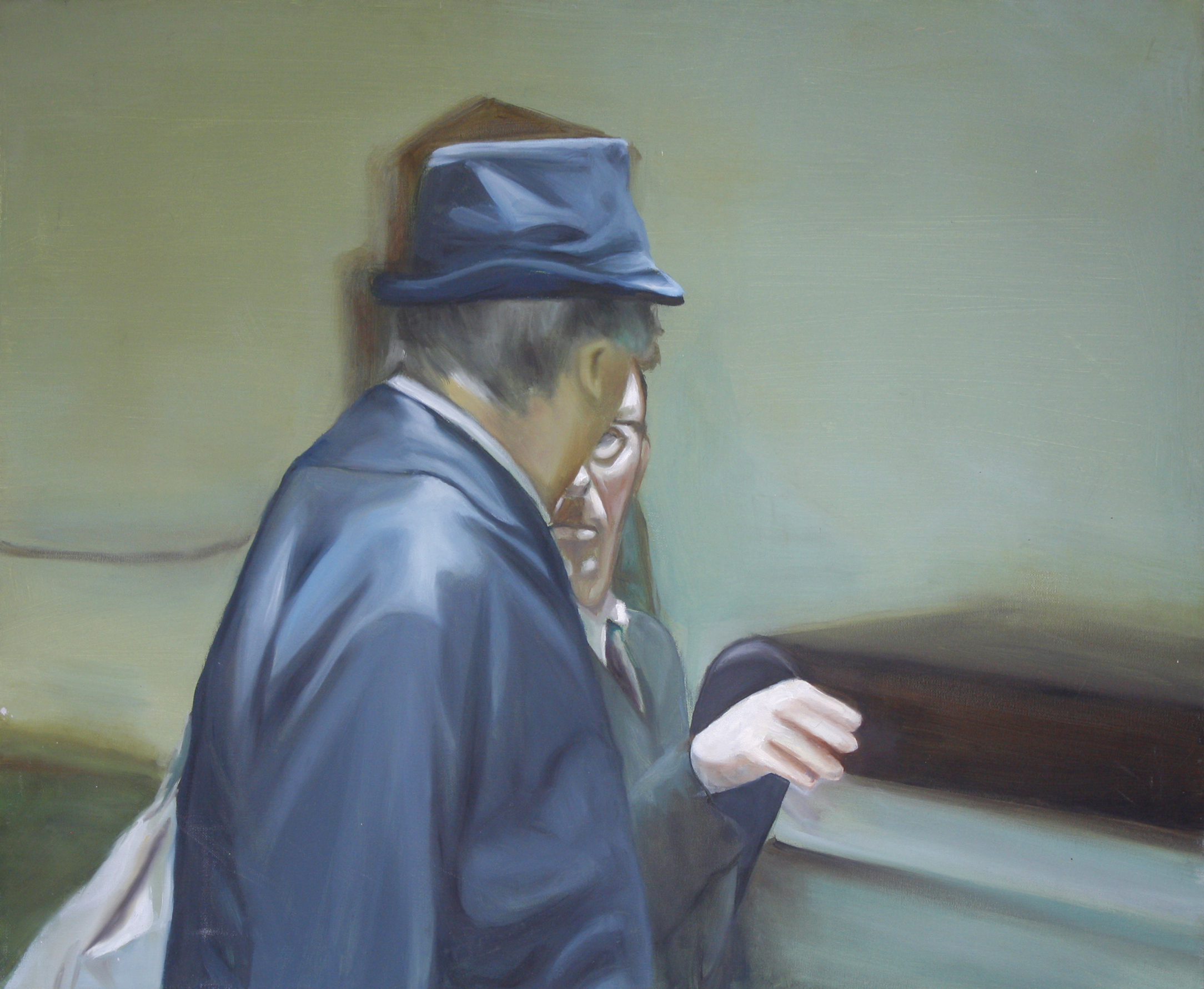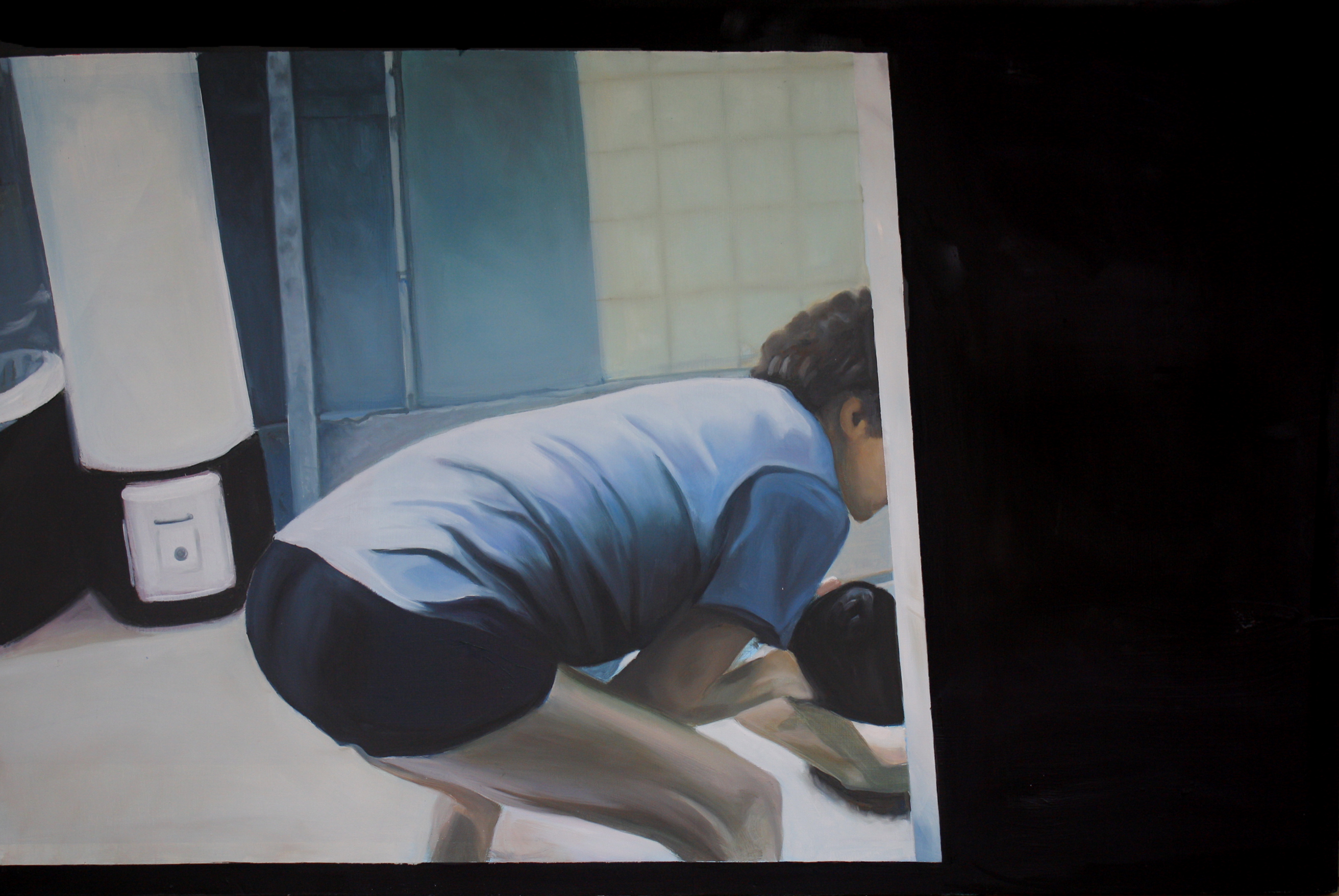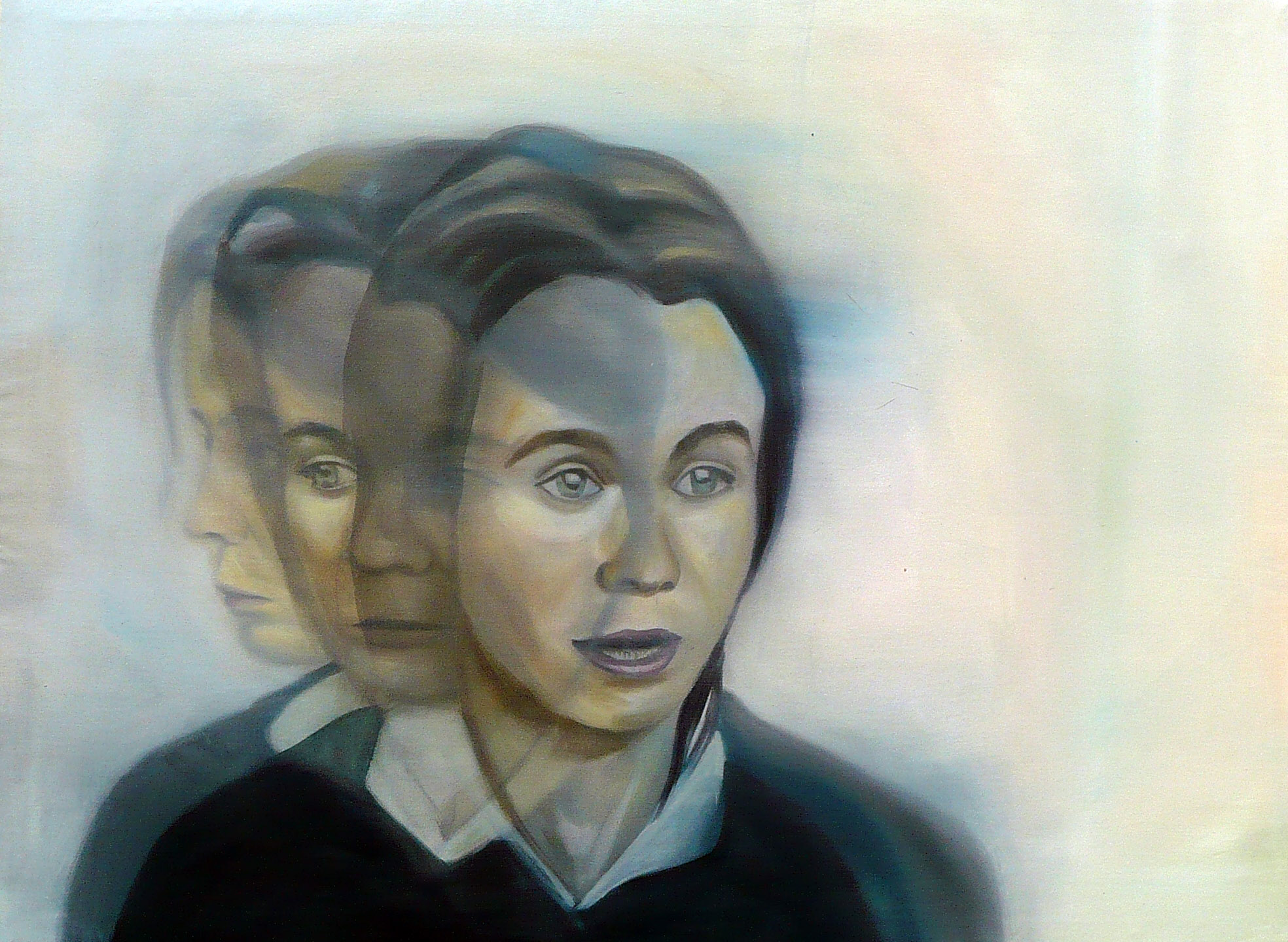“Do I add to the images in movies? I don’t think so; I don’t have time: in front of the screen, I am not free to shut my eyes; otherwise, opening them again, I would not discover the same image; I am constrained to a continuous voracity; a host of other qualities, but not pensiveness, whence the interest, for me, of the photogram.”
Roland Barthes,
Camera Lucida.
Roland Barthes,
Camera Lucida.
2008-2012
From Film to Painting
About Cinema(EN) This exhibition sought to construct a dialogue between pictorial and film language, utilizing visual language as a way to establish parallelisms and dissonances between them. I have a particular interest in the way a cinematograph works, through its continuous transmission of images, and cinema’s use of time. I am also interested in painting’s time and its forms of contemplation, in terms of its spatiality, temporality and memory. Cinema is an image constructor and thereby has an inherent relation to other visual languages like painting.
Action in film involves the succession of photograms, in which each photogram annuls the previous one from the observer’s memory. This means constantly remembering and forgetting a vast quantity of images in a short amount of time. In this investigation, the act of painting consists of preserving an image as a memory in the observer’s eye. The photogram, extracted from its sequentiality, acquires more importance in the observer’s memory.
Sobre el cine
(ES) Esta exposición procuró establecer un diálogo entre el lenguaje pictórico y cinematográfico utilizando el lenguaje visual como forma de entablar paralelismos y disonancias entre ambos. Tengo un particular interés en las peculiaridades del funcionamiento del cinematógrafo y los tiempos del cine, así como los tiempos de la pintura y sus formas de contemplación, en torno a sus nociones de espacialidad, temporalidad y memoria. De esta forma parto de la premisa de que el cine es antes de todo una construcción de imágenes, y por tanto preserva dentro de sí relaciones con otros lenguajes visuales que le han precedido (como lo es la pintura).
La acción de cine involucra la sucesión de fotograma tras fotograma, en el cual el sucesor anula al anterior en la memoria del espectador; se da así un recuerdo y olvido constantes de una inmensa cantidad de imágenes en un tiempo determinado. En este acto de pintar se involucra el congelamiento de una imagen cinematográfica manteniéndola así como un recuerdo fijo en la memoria. El fotograma al estar retraído de su condición de secuencialidad adquiere una importancia mayor en la memoria del espectador.

Untitled
Oil on canvas 50,5×44cm
2014
![]() Coincidence 1
Coincidence 1
Coincidencia 1
Oil on canvas 52×44cm
2010
![]()
![]()
![]()
![]()
![]()
Oil on canvas 50,5×44cm
2014
 Coincidence 1
Coincidence 1Coincidencia 1
Oil on canvas 52×44cm
2010








One-second Painting
Un segundo en pintura
24 cajas de luz. Óleo sobre papel.
24 oil on paper light boxes 236×12×8cm
2008
Un segundo en pintura
24 cajas de luz. Óleo sobre papel.
24 oil on paper light boxes 236×12×8cm
2008